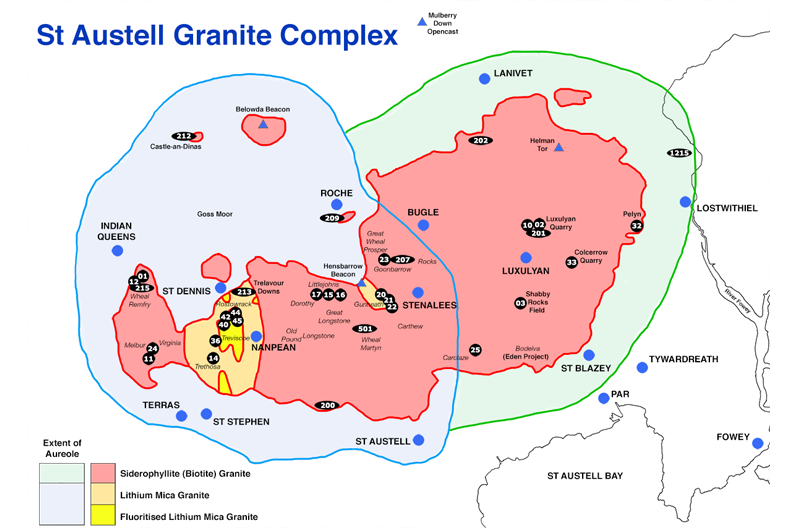
New - St Austell Granite Collection
Dr Andy Tindle has created a new collection of 30 rocks and thin sections from the St Austell Granite in SW England.
The St Austell granite is famous for it's mines and china clay pits - zones where the hydrothermal activity associated with the intrusion was so intense it that completely transformed the feldspar into clay. SW England produces large amounts of clay used in pottery and china.
If you thought the process of conversion from granite to clay was passive then take a look at this collection – the fluid that caused these changes was both corrosive and explosive. The western part of the granite was severely altered by late stage fluids released from an extremely evolved granite which is rich in elements such as boron, lithium, fluorine, and phosphorus, and was the driving force behind the hydrothermal system.
There are a few granite samples from the siderophyllite granite, through more altered granitic rocks to tourmaline dominated rocks like the beautiful luxillianite (e.g. ); fluorite containing granite; amazing explosion breccias; and strange altered veins called elvans and altered mineralised rocks known as greisen. St Austell also has mineralisation including cassiterite and cryptomelane.